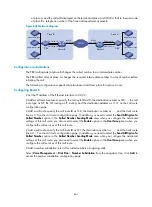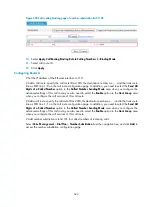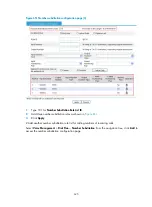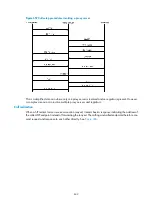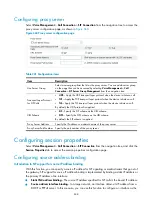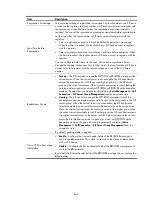
633
Figure 658
Call redirection procedure for UAs
This is a common application. Fundamentally, a redirect server can respond with the address of a proxy
server as well. The subsequent call procedures are the same as the call procedures involving proxy
servers.
Support for transport layer protocols
As an application layer protocol, SIP supports three transport layer protocols, including:
•
UDP
—UDP is a connectionless protocol and does not provide reliability. Therefore, SIP connections
established over UDP are unreliable.
•
TCP
—Ensures transmission reliability for SIP messages. TCP provides connection-oriented and
reliable transmission for SIP-based VoIP communications. Using TCP, SIP need not consider packet
loss and retransmission issues.
•
Transport layer security (TLS)
—Ensures transmission security for SIP messages. For more information,
see "
."
The above three transport layer protocols have their own benefits, and allow you to select a protocol
based on your network environment. The system does not support transport layer protocol switchover
during communication.
SIP security
This section provides information on signaling encryption, media flow encryption, and TLS-SRTP
combinations.
Internet
User agent
User agent
Redirect Server
INVITE
100 Trying
302 Moved Temporarily
ACK
100 Trying
200 OK
INVITE
ACK
Summary of Contents for MSR SERIES
Page 17: ...xv Documents 835 Websites 835 Conventions 836 Index 838 ...
Page 20: ...3 Figure 3 Initial page of the Web interface ...
Page 42: ...25 Figure 13 Firefox Web browser setting ...
Page 59: ...42 Figure 27 Checking the basic service configuration ...
Page 73: ...56 Figure 35 Sample interface statistics ...
Page 156: ...139 Figure 139 Rebooting the 3G modem ...
Page 168: ...151 Figure 152 Configuring Web server 2 ...
Page 174: ...157 Figure 158 Configure the URL filtering function ...
Page 242: ...225 Figure 233 Enabling the DHCP client on interface Ethernet 0 1 ...
Page 247: ...230 Figure 236 The page for configuring an advanced IPv4 ACL ...
Page 255: ...238 Figure 241 Advanced limit setting ...
Page 298: ...281 e Click Apply 2 Configure Router B in the same way Router A is configured ...
Page 400: ...383 Figure 387 Verifying the configuration ...
Page 405: ...388 ...
Page 523: ...506 Figure 530 Ping configuration page ...
Page 775: ...758 Figure 785 Configuring a jump node ...



